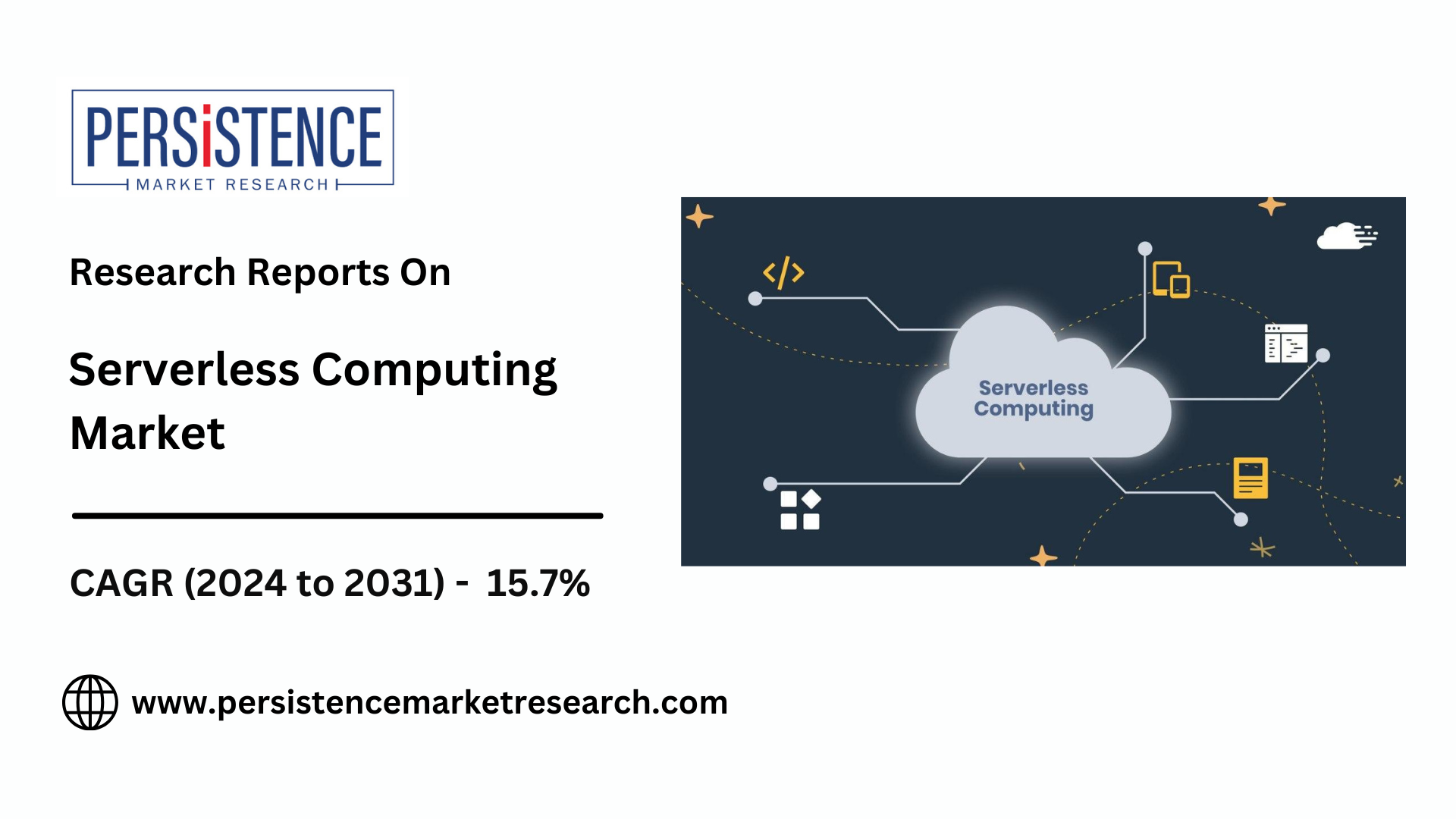Asia Pacific Emerges as Fastest-Growing Serverless Computing Market

Strong 8k brings an ultra-HD IPTV experience to your living room and your pocket.
The global serverless computing market is expected to grow from US$ 21.3 billion in 2024 to US$ 58.95 billion by 2031, with a CAGR of 15.7%. Key drivers include the increasing demand for cost-effective, scalable cloud solutions, the adoption of microservices architectures, and the growing focus on digital transformation. North America is poised to lead the market with a 38.5% share in 2024, driven by key players like AWS, Microsoft Azure, and Google Cloud. The FaaS (Function as a Service) model is set to dominate the market, contributing to 53.2% of the global share in 2024. Asia Pacific is also experiencing rapid growth due to increased cloud computing adoption and government-backed digital transformation initiatives. Serverless computing is particularly popular for real-time analytics, stream processing, and microservices-based applications, further boosting its market expansion.
The serverless computing market is witnessing significant growth globally, and the Asia Pacific (APAC) region has emerged as the fastest-growing market for this transformative technology. As digitalization accelerates across the region, businesses are increasingly turning to cloud-based solutions to meet the growing demand for scalable and cost-efficient IT infrastructure. Serverless computing, with its unique advantages in terms of flexibility, scalability, and cost-effectiveness, is gaining traction across various industries, making Asia Pacific a key player in the global market.
This article delves into the factors driving the rapid adoption of serverless computing in the Asia Pacific region, the industries benefiting most from this technology, key challenges to overcome, and the future outlook for the market.
Rising Cloud Adoption Fueling Serverless Growth
Cloud adoption in Asia Pacific has surged in recent years, driven by the increasing need for businesses to embrace digital transformation. As more companies move their operations to the cloud, they are looking for ways to streamline application development and reduce infrastructure overhead. Serverless computing is a perfect fit for these needs, as it allows businesses to scale applications seamlessly without the burden of managing servers or infrastructure.
The region’s strong focus on cloud-native applications is another key factor driving the growth of serverless computing. Cloud-native applications, which are designed specifically to take advantage of the cloud environment, are gaining popularity among organizations looking to create more agile, scalable, and efficient solutions. Serverless computing offers a natural alignment with cloud-native principles by providing event-driven, scalable execution of code in response to specific triggers or events.
Furthermore, the growing popularity of hybrid cloud and multi-cloud strategies in the region has bolstered the demand for serverless solutions. As businesses seek to avoid vendor lock-in and optimize for cost and performance, serverless computing offers a way to manage workloads across multiple cloud platforms seamlessly. This flexibility is essential for businesses in Asia Pacific that are increasingly looking to distribute their workloads and reduce dependency on a single cloud provider.
Key Industries Driving the Adoption of Serverless Computing
Several key industries in Asia Pacific are driving the rapid adoption of serverless computing:
E-Commerce and Retail: Asia Pacific is home to some of the world’s largest e-commerce giants, such as Alibaba, Rakuten, and Flipkart. These companies require highly scalable infrastructure to handle fluctuating customer demand, especially during peak seasons like Singles Day or Black Friday. Serverless computing allows them to scale their applications on-demand, ensuring optimal performance during traffic spikes while avoiding over-provisioning costs during slower periods.
Finance and FinTech: The financial services sector in Asia Pacific is undergoing significant digital transformation, with an increasing number of banks and financial institutions adopting cloud computing and serverless models. Serverless platforms offer cost-effective solutions for running financial applications, processing large volumes of data, and enabling real-time transactions. Additionally, the ability to quickly scale in response to market demand and regulatory requirements is a key benefit for financial institutions in the region.
Healthcare: The healthcare industry in Asia Pacific is embracing serverless computing to improve patient care, streamline administrative operations, and enhance data management. With the growing emphasis on telemedicine, electronic health records (EHR), and data analytics, healthcare providers are turning to cloud-based solutions to better manage workloads and patient data. Serverless computing enables healthcare organizations to scale applications based on fluctuating demand, ensuring consistent performance while optimizing costs.
Gaming: The gaming industry in Asia Pacific, particularly in countries like China, Japan, and South Korea, is a major driver of serverless computing adoption. Gaming companies require infrastructure that can scale rapidly to accommodate millions of concurrent players. Serverless computing allows gaming companies to deploy cloud-based solutions that handle unpredictable workloads, reduce latency, and deliver seamless gaming experiences.
Startups and SMBs: The vibrant startup ecosystem in Asia Pacific is another key factor driving the adoption of serverless computing. Small and medium-sized businesses (SMBs) are particularly attracted to serverless platforms due to their cost efficiency, ease of use, and ability to scale rapidly without the need for significant upfront investment in infrastructure. Serverless computing levels the playing field, enabling startups to compete with larger players by providing access to enterprise-grade computing resources on a pay-as-you-go basis.
Increasing Investment in Cloud Infrastructure and Serverless Solutions
Governments and private enterprises across Asia Pacific are heavily investing in cloud infrastructure and serverless solutions. For example, in India and Southeast Asia, there is a growing push to digitize various sectors, including agriculture, education, and public services, through cloud-based technologies. These initiatives are creating a fertile ground for the growth of serverless computing platforms.
In addition, major cloud providers like Amazon Web Services (AWS), Microsoft Azure, and Google Cloud are expanding their serverless offerings in the region. These companies are not only strengthening their infrastructure but also providing localized solutions to cater to the unique needs of APAC businesses. As cloud providers continue to expand their serverless computing services, the adoption rate is expected to accelerate, particularly among organizations looking to optimize their cloud strategy and enhance their ability to scale applications efficiently.
Key Challenges and Barriers to Adoption
While the serverless computing market in Asia Pacific is growing rapidly, businesses in the region face several challenges in adopting this technology.
Security and Compliance: Security remains a significant concern for organizations transitioning to serverless computing, particularly in highly regulated industries like finance and healthcare. Companies must ensure that their cloud providers meet local and international security and compliance standards, which can be a complex process in certain regions.
Skill Gaps: While serverless computing offers many advantages, it requires a different skill set compared to traditional server-based systems. Organizations may face challenges in upskilling their workforce to effectively develop, deploy, and manage serverless applications. The shortage of skilled professionals in cloud computing and serverless technologies may slow down adoption in some areas.
Vendor Lock-In: Although serverless computing offers flexibility, businesses may still face concerns about vendor lock-in, as each cloud provider has its own proprietary serverless solutions. Organizations must carefully assess their needs and select the right provider to ensure they can migrate workloads or switch providers if necessary without incurring significant costs.
Monitoring and Debugging: The abstracted nature of serverless computing can make monitoring and debugging more complex. Developers need to adopt specialized tools and practices to track application performance, troubleshoot issues, and ensure optimal resource utilization.
Future Outlook for Serverless Computing in Asia Pacific
The future of serverless computing in Asia Pacific looks incredibly promising. As cloud adoption continues to rise and businesses increasingly demand scalable, cost-effective solutions, serverless computing will play a crucial role in transforming industries across the region. The market is expected to grow at a compound annual growth rate (CAGR) of over 20% from 2024 to 2031.
As the region becomes more cloud-native and businesses embrace hybrid and multi-cloud strategies, serverless computing will offer the flexibility and scalability required to meet the evolving needs of the digital economy. Industries like e-commerce, finance, healthcare, and gaming will continue to lead the charge in adopting serverless solutions, while startups and SMBs will increasingly rely on these platforms to innovate and scale their operations.
In conclusion, Asia Pacific is positioning itself as a key driver of the global serverless computing market. With its growing adoption across multiple industries, investment in cloud infrastructure, and the increasing need for scalable, cost-effective solutions, serverless computing is set to become a cornerstone of the region's digital transformation in the years ahead. Businesses that embrace serverless computing will be well-positioned to gain a competitive edge in the rapidly evolving digital landscape.
Note: IndiBlogHub features both user-submitted and editorial content. We do not verify third-party contributions. Read our Disclaimer and Privacy Policyfor details.







